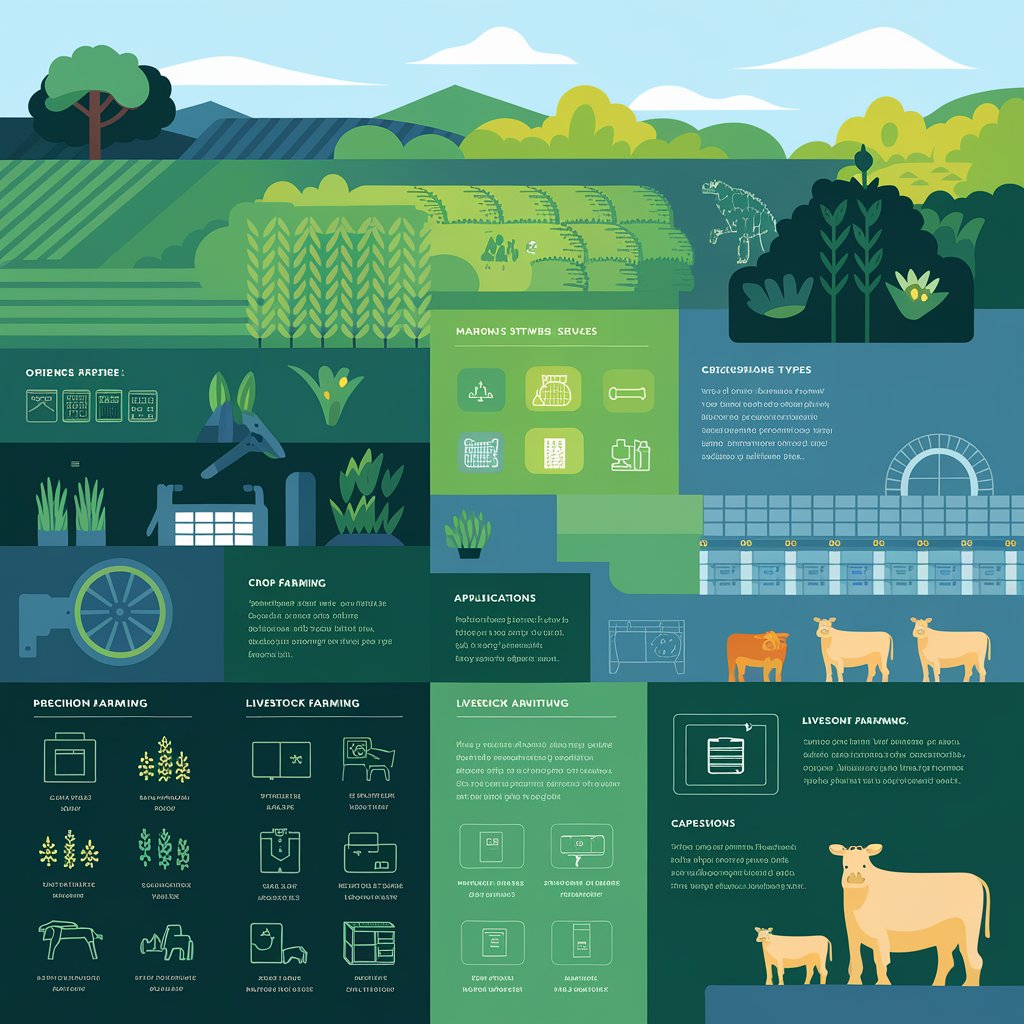Through the integration of cutting-edge technologies like IoT, AI, robots, and automation, the smart agriculture market is revolutionizing the agricultural sector. The goals of these developments are to increase sustainability, productivity, and resource management. The necessity to meet growing food demand while reducing environmental impact is driving a major increase in the worldwide smart agriculture industry.
The global smart agriculture market size is projected to reach USD 25.4 billion by 2028 from an estimated USD 16.2 billion in 2023, at a CAGR of 9.4% from 2023 to 2028.
The growing worldwide population, which puts strain on the food supply system, and the growing usage of contemporary technologies in agriculture are the main causes of the smart agriculture industry’s market expansion.
Global Market Trends in Smart Agriculture
Global trends show that smart greenhouse technology, livestock monitoring, and precision farming are becoming more and more popular. A number of variables, including population growth, climate change, and technological improvements, are responsible for these patterns. In order to make farming more effective and ecologically friendly, the emphasis is on increasing agricultural productivity, maximizing the use of water and fertilizer, and cutting waste. Because of the growing use of smart agricultural methods in nations like China and India, the Asia-Pacific area in particular is becoming a significant player.
Download PDF Brochure @ https://www.marketsandmarkets.com/pdfdownloadNew.asp?id=239736790

Technological Advances in Smart Farming
Recent advancements in technology are revolutionizing the smart agriculture market. Some of the major innovations include:
- IoT Integration: Smart sensors monitor soil health, crop conditions, and weather patterns in real time, allowing farmers to make data-driven decisions.
- Drones and Robotics: Drones are used for aerial surveys and precision spraying, while robots automate tasks like planting, harvesting, and monitoring livestock.
- Artificial Intelligence (AI): AI-powered analytics help farmers predict weather patterns, analyze crop health, and forecast yields more accurately.
Benefits and Challenges in the Adoption of Smart Agriculture
Improved resource management, lower labor expenses, and higher output are just a few advantages of implementing smart agriculture. By maximizing the use of fertilizer and water, it also contributes to sustainable agricultural methods and increases crop yields.
However, obstacles including the expensive cost of implementing technology, the absence of infrastructure in rural areas, and farmers’ lack of technical expertise prevent widespread adoption. Another major issue in developing nations is the absence of dependable electricity and internet access.
IoT in Agriculture
Because it makes it possible to automate and monitor farming operations in real time, the Internet of Things (IoT) is essential to smart agriculture. Sensors and linked equipment are examples of IoT devices that offer information on crop health, soil moisture, and weather. By using this information, farmers may maximize the use of pesticides, fertilizer, and irrigation, resulting in more productive agricultural methods. For instance, smart irrigation systems guarantee that water is used exactly where and when it is needed, minimizing waste and increasing crop yields.
Drones and Robotics in Agriculture
Agricultural operations are changing as a result of robotics and drones automating labor-intensive chores. Drones with cutting-edge imaging capabilities can monitor crop health, survey vast areas, and identify problems like pests or diseases early on. Conversely, robotics can carry out monotonous jobs like weeding, harvesting, and seeding, decreasing the need for manual labor and boosting productivity.
North America Smart Agriculture Industry Analysis
Technology breakthroughs and the rising need for sustainable farming methods have made North America a major player in the global smart agriculture market. Precision agricultural technology like GPS-guided tractors, intelligent irrigation systems, and automated equipment have seen large investments in the U.S. and Canada. The market has grown even more as a result of the region’s emphasis on sustainable agriculture and government programs encouraging the use of technology in farming.
Innovations in Smart Farming Technologies
The core of smart agriculture is innovation. With the help of technology, farmers can now optimize every part of their operations, from sophisticated robotics and drones to AI-driven analytics and machine learning algorithms. Vertical farming, which uses less land and resources by growing crops in stacked levels, is one noteworthy breakthrough. Blockchain technology is also being adopted to improve supply chain traceability, guaranteeing food safety and transparency from farm to table.
Some of the key players in the smart agriculture companies are
- Deere & Company (US),
- Trimble Deere & Company (US),
- Trimble Inc. (US),
- AGCO Corporation (US),
- Topcon Positioning Systems (US),
- DeLaval (Sweden),
- AKVA Group (Norway),
- Allflex Livestock Intelligence (US),
- Innovasea Systems Inc. (US),
- Afimilk Ltd. (Israel),
- Heliospectra AB (Sweden).
The market for smart agriculture is expected to increase significantly due to the need to meet global food demands, environmental objectives, and technical advancements. Farming is becoming more data-driven, eco-friendly, and efficient because to developments in IoT, AI, drones, and robotics. To fully realize the potential of smart agriculture worldwide, however, issues including high upfront expenditures and infrastructure constraints must be resolved. While developing nations provide unexplored prospects for future progress, regions such as North America are leading the charge as the market continues to evolve.
FAQ on Smart Agriculture Market
What is the concept of smart agriculture?
Smart agriculture refers to the use of advanced technologies like IoT, AI, drones, and automation to optimize farming practices. It aims to improve productivity, resource management, and sustainability in agriculture through data-driven insights.
What is agriculture market intelligence?
Agriculture market intelligence involves collecting and analyzing data on market trends, crop production, prices, and supply chains to help farmers, businesses, and policymakers make informed decisions.
What is the future of smart agriculture?
The future of smart agriculture is promising, with continued advancements in AI, robotics, and IoT expected to drive efficiency and sustainability. Smart farming is projected to play a vital role in addressing global food security and environmental concerns.
How big is the climate smart agriculture market?
The climate-smart agriculture market is rapidly growing, with estimates suggesting it will reach several billion dollars in the coming years, driven by the need for sustainable farming practices that mitigate climate change impacts.